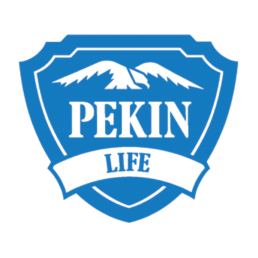Pekin Insurance
Regional insurance company implemented the Solimar Print/Director to print Xerox Metacode applications on PostScript printers, and simultaneously generate TIFF and PDF output for imaging systems and online viewing.
Industry
Insurance
Geography
Pekin, IL
Business Solution
- Output Management
- Device Connectivity
- Data Stream Conversion
- Electronic Document Distribution and Management
Solimar Products
- Solimar Print/Director
- Base system with XIMAGE™
- TCP/IP Input and Output
- XCHANGE:: PostScript
- XCHANGE:: PDF
- PostScript::TIFF
Benefits
- Re-purposed print streams to enable electronic document viewing
- Shortened turnaround time for print jobs
- Eliminated manual print and scan workflow by automatically generating TIFF and PDF output
- Eliminated human errors with automatic job routing

Transferring Mainframe Printing from Proprietary DJDE to an Open Architecture Printer
Founded in 1921, Pekin Insurance is a regional full-service insurance carrier, writing policies for their popular Personal and Commercial insurance lines, as well as offering life, health and group coverage. Serving Illinois, Indiana, Iowa, and Wisconsin, Pekin boasts nearly 400,000 policyholders. Pekin typically prints about 3.1 million pages of policies, bills, internal reports, commission statements, and production reports each month. Most reports are generated as Xerox Metacode applications by Docucorp’s DocuMaker product. For several years, Pekin printed to one Xerox 4090 LPS printer and two Xerox 4050 LPS printers, all channel-attached to a mainframe and directly supporting the Metacode output from DocuMaker. In late 2001, Pekin replaced the three Xerox LPS Metacode printers with two new Xerox DocuPrint PostScript printers: a DP6115 and a DP6100.
To make the legacy data compatible with the new DocuPrint printers, Xerox analysts recommended the Solimar® Print/Director for converting the Metacode applications to PostScript. In addition to providing the data stream conversions, Print/Director included integrated channel connectivity with the mainframe and automated job management capabilities. As a result of Print/Director’s unique modular design, Pekin simply needed to add components to their existing configuration to simultaneously produce TIFF output for the ImageRight system, and PDF output for online access. In addition, Print/Director was configured to use data contained within the print streams to automatically parse and name the TIFF and PDF output files based on individual policy information. The ImageRight system uses the filename information generated by Print/Director to control the storage of the individual TIFF documents.
“The turnaround time for print jobs is now shorter, and generating electronic output in TIFF and PDF format provides real dollar savings.”
Rod McKimson
Pekin Insurance
One of Pekin’s requirements for the new solution was the ability to maintain existing printing procedures. McKimson explained how Print/Director met this goal, “We wanted the use of Solimar [Print/Director] to be transparent to our operations staff. Just as on the previous printers, today when a print job is run, the operator will alter the class on the list queue to send the print stream to Solimar. Print/Director determines the type of print job by reading a banner page sent with each print stream and determines if the job should be printed or imaged. If the job is to be printed, Solimar automatically determines which printer to send it to, converts it to PostScript, and identifies the job to the operator so they know what type of paper needs to be loaded into the printers. If the job is to be imaged, Solimar simply converts it to TIFF or PDF, and directs the output to the appropriate network file folder.”
“Tech Support has always been friendly and prompt with responses to any questions or problems.”
Rod McKimson
Pekin Insurance
With the new, custom solution in place, Print/Director and the DocuPrint printers provided Pekin with a more advanced and efficient printing process. The turnaround time for print jobs is now shorter, and generating electronic output in TIFF and PDF format provides real dollar savings in printer operation time, supplies, paper, and postage. The automatic routing of TIFF output to the ImageRight system eliminated the tedious and costly process of manually scanning printed pages, and the programming staff can instantly access the TIFF output for testing and proofing instead of waiting for printed output to arrive. Moreover, Pekin’s end users are able to configure Print/Director’s job processing and management features without assistance. According to McKimson, “Everything being Windows-oriented with drop-down menus makes it very easy to go through each module and make a selection.” Although some businesses prefer to manually route jobs, most others, including Pekin, want everything to run automatically. Print/Director’s standard job control features include a user-friendly queue/spool manager with a “drag-and-drop” interface for job distribution, automated load balancing, dynamic data modification, timed release and deletion, file insertion, page counting, and job parsing, routing and tracking.